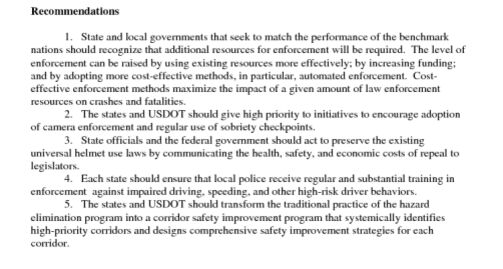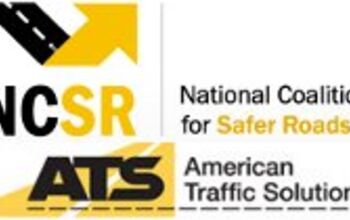American Roads Safer Than Ever… But How Safe Is Safe Enough?
On-road fatalities per vehicle-mile-traveled in the United States have fallen to their lowest level in recorded history ( and dropping fast)… so safety advocates must be thrilled with the success, right? Wrong. After all, success is almost more dangerous to a crusade than failure. Luckily for the hand-wringing faction, a study by the National Research Council has re-defined what it means to be safe enough on America’s roads: rather than comparing fatalities to America’s past (which makes the current environment seem great), the key is comparing America’s safety record to completely different countries. Take it away, New York Times:
While France and 15 other high-income nations cut their traffic fatalities by half from 1995 to 2009, the United States showed only a 19 percent reduction over that same time period. Britain dropped the number of fatal accidents by 39 percent over the last 15 years, and Australia by 25 percent.
And what makes the US different than these other countries (other than the fact that we apparently don’t care about traffic deaths)? The problem, it turns out, is our insufficiently intrusive government.
Aye, there’s the rub. The US doesn’t require mandatory driver training, nor does it administer “idiot tests.” Is it any wonder that we aren’t reducing traffic fatalities as quickly? But the report doesn’t even get into driver competence… apparently the cure for our lagging reduction of fatalities is more surveillance and literal intrusion.
The report says that drivers are safer in countries where the national government plays a more prominent role in devising and managing traffic safety initiatives. Wider use of automatic speed limit enforcement in America could save 1,000 to 2,000 lives a year, according to the report, while sustained and frequent sobriety checkpoints could potentially save 1,500 to 3,000 lives a year.
One problem on the face of things: these measures don’t demonstrably make roads any safer. T raffic fatalities actually went up when Australia established speed limits on rural highways, and went down when the US dropped the federal 55 MPH speed limit. Introducing speed cameras in the UK actually caused the rate of decline in road casualties to slow. We could go on, but it’s clear that more government intervention, especially in the areas of speed control and surveillance, don’t consistently improve on-road conditions.
Whether the trade-off of government expansion (and surveillance) troubles you or not, everyone should be able to agree that wasting money on questionably-effective traffic controls is poor policy when rates are already at historically low levels and declining. And comparing conditions to the car-crazed US to safety improvements in countries where driving is generally more restricted doesn’t make the case any stronger.
More by Edward Niedermeyer
Latest Car Reviews
Read moreLatest Product Reviews
Read moreRecent Comments
- Kwik_Shift_Pro4X At the taxpayers expense, as usual.
- Danddd Or just get a CX5 or 50 instead.
- Groza George My next car will be a PHEV truck if I can find one I like. I travel a lot for work and the only way I would get a full EV is if hotels and corporate housing all have charging stations.I would really like a Toyota Tacoma or Nissan Frontier PHEV
- Slavuta Motor Trend"Although the interior appears more upscale, sit in it a while and you notice the grainy plastics and conventional design. The doors sound tinny, the small strip of buttons in the center stack flexes, and the rear seats are on the firm side (but we dig the ability to recline). Most frustrating were the repeated Apple CarPlay glitches that seemed to slow down the apps running through it."
- Brandon I would vote for my 23 Escape ST-Line with the 2.0L turbo and a normal 8 speed transmission instead of CVT. 250 HP, I average 28 MPG and get much higher on trips and get a nice 13" sync4 touchscreen. It leaves these 2 in my dust literally


































Comments
Join the conversation
Actually, the most dangerous activity is to stay at home.
45.99% of fatal accidents happen in the home.
33.04% of fatal accidents happen in a motor vehicle
The safest place? Go to work:
2.16% of fatal accidents happen at work. As long as your job is safe, you are safe. Unemployment can lead to massive amounts of deaths.
This is why wearing a helmet should be made mandatory for everyone outside the bed.